Super Real Estate
Back when Guardians of the Galaxy – Mission: BREAKOUT! was first announced, fan reaction had been swift and merciless. Even when the ride opened (and proved itself a very good ride on its own merits), you can understand why Imagineering fans held a grudge. Here, after all, was a lone, modern, irreverent, sci-fi superhero ride that had replaced one of the park’s few Californian E-Ticket and – even if only by proximity and precedent – was listed as a ride in Hollywood Land.
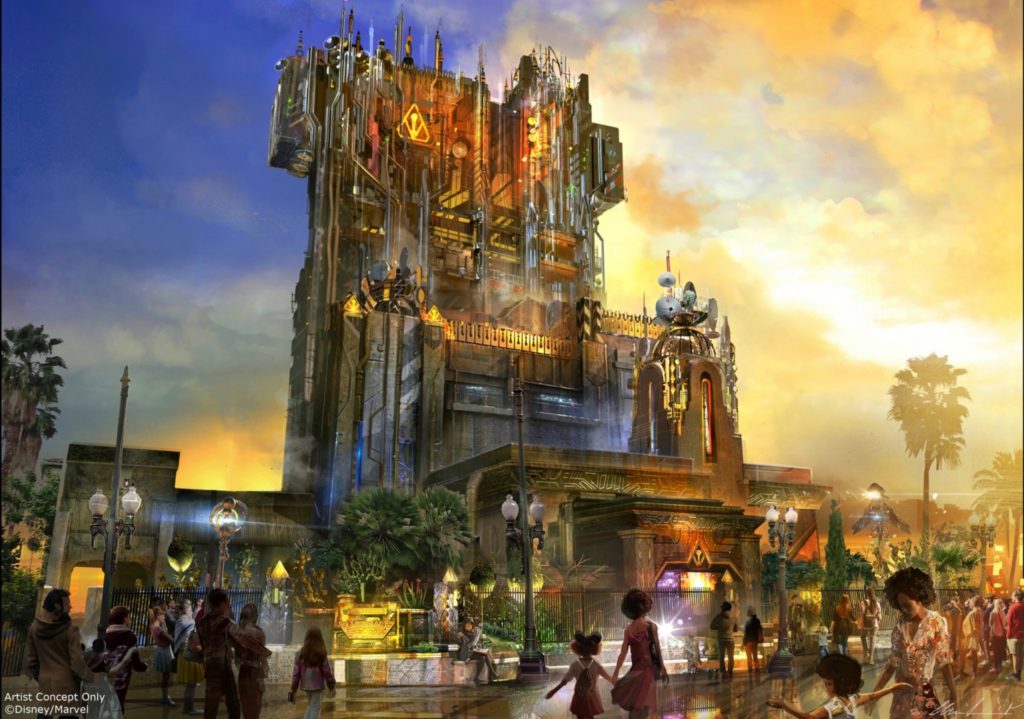
Not only had those dreams of a “Phase II” upgrade to Hollywood Land not come to pass, but now the land harbored an anachronistic eyesore that betrayed the $1.2 billion that had just been spent to remove such clutter and anachronism from the park. And even if Mission: BREAKOUT! was a laugh-out-loud good time, the Red Car Trolley having stops on Buena Vista Street, Carthay Circle, and a sci-fi superhero “warehouse prison power plant” decked out in pipes and satellite dishes surely undercut the park’s hard-won narrative…
Inside Imagineering, designers largely acknowledged the now-industrial Tower’s intrusion in the park but slyly promised that it would all make sense soon. Eventually, they suggested, Mission: BREAKOUT! would be annexed to a larger Marvel-themed section of the park…
In retrospect, we can figure out what they meant. After all, in August 2016 – just a month after Rohde had announced Mission: BREAKOUT! at Comic Con – Disney unveiled plans for a radical reimagining of the Disneyland Resort’s infrastructure.
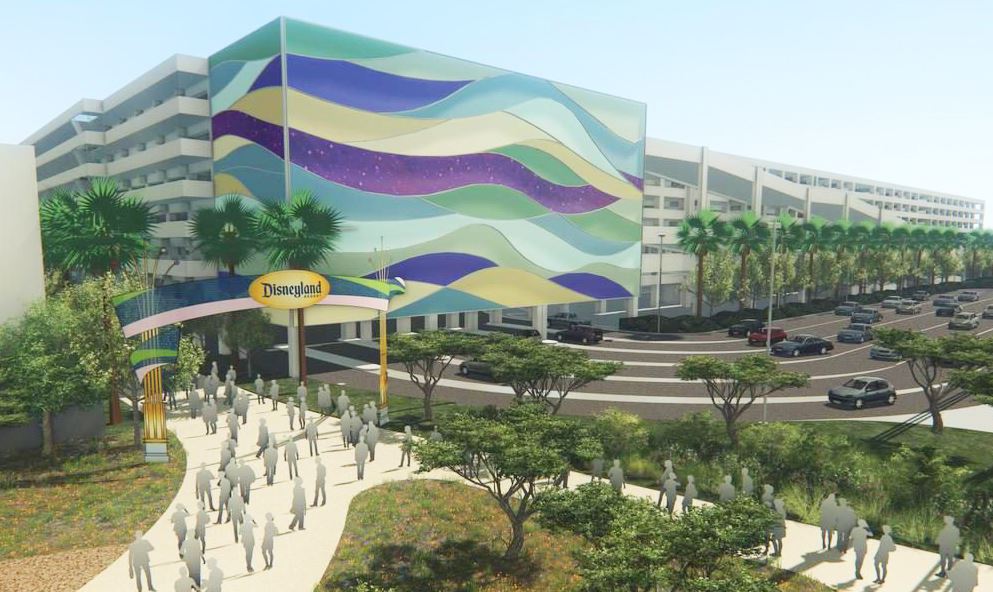
Basically, Disney’s plans revolved around the construction of a gargantuan parking deck on the resort’s east side (opposite the existing Mickey & Friends structure on the west side). This master-planned “Eastern Gateway” would not only expand the resort’s notoriously-limited parking capacity, but also vastly reimagine (and frankly, vastly worsen) the entry experience to the resort for guests staying in hotels along Harbor Blvd.
Aside from passive-aggressively disincentivizing off-site stays by complicating pedestrian access, the Eastern Gateway would also relocate the resort’s existing drop-off and pick-up bus loops and security check points to a new, off-site transportation plaza, routing all guests to a second-story bridge over Harbor Blvd. that would then descend into the Esplanade between parks.
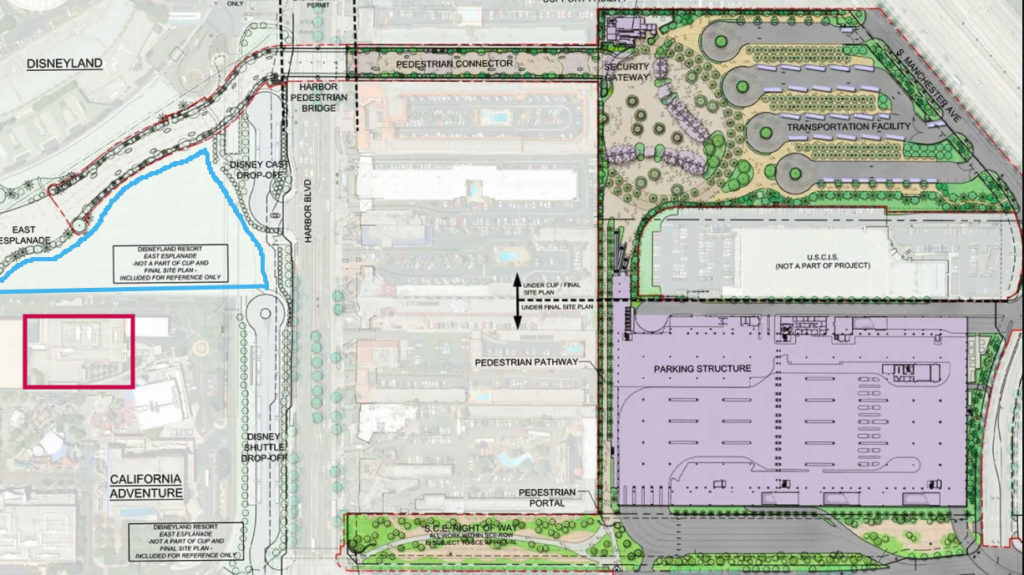
And therein lay the prize. By relocating the existing pedestrian entry and bus loops (outlined in blue, above), Disney would suddenly find itself with newly-accessible acreage to expand Disney California Adventure. At least in Imagineering’s eyes, it must’ve looked like divine intervention. The newly-accessible real estate, when combined with part or even all of California Adventure’s Hollywood Land, would basically arm Disney was a massive section of the park to reverse-engineer a Marvel Land, perfectly situation around the preemptively-swapped Mission: BREAKOUT. It was a perfect plan.
… Except, of course, that the political pieces Disney expected to fall into place around the Eastern Gateway, didn’t. In October 2017, Disney officially acknowledged that the Eastern Gateway project they’d announced a year earlier was officially dead. (A second parking structure was instead built back on the resort’s west side, next to the existing Mickey & Friends garage.) That’s all well and good, except that now Hollywood Land contained Mission: BREAKOUT… and didn’t have the space it expected to use to build a Marvel land around it.
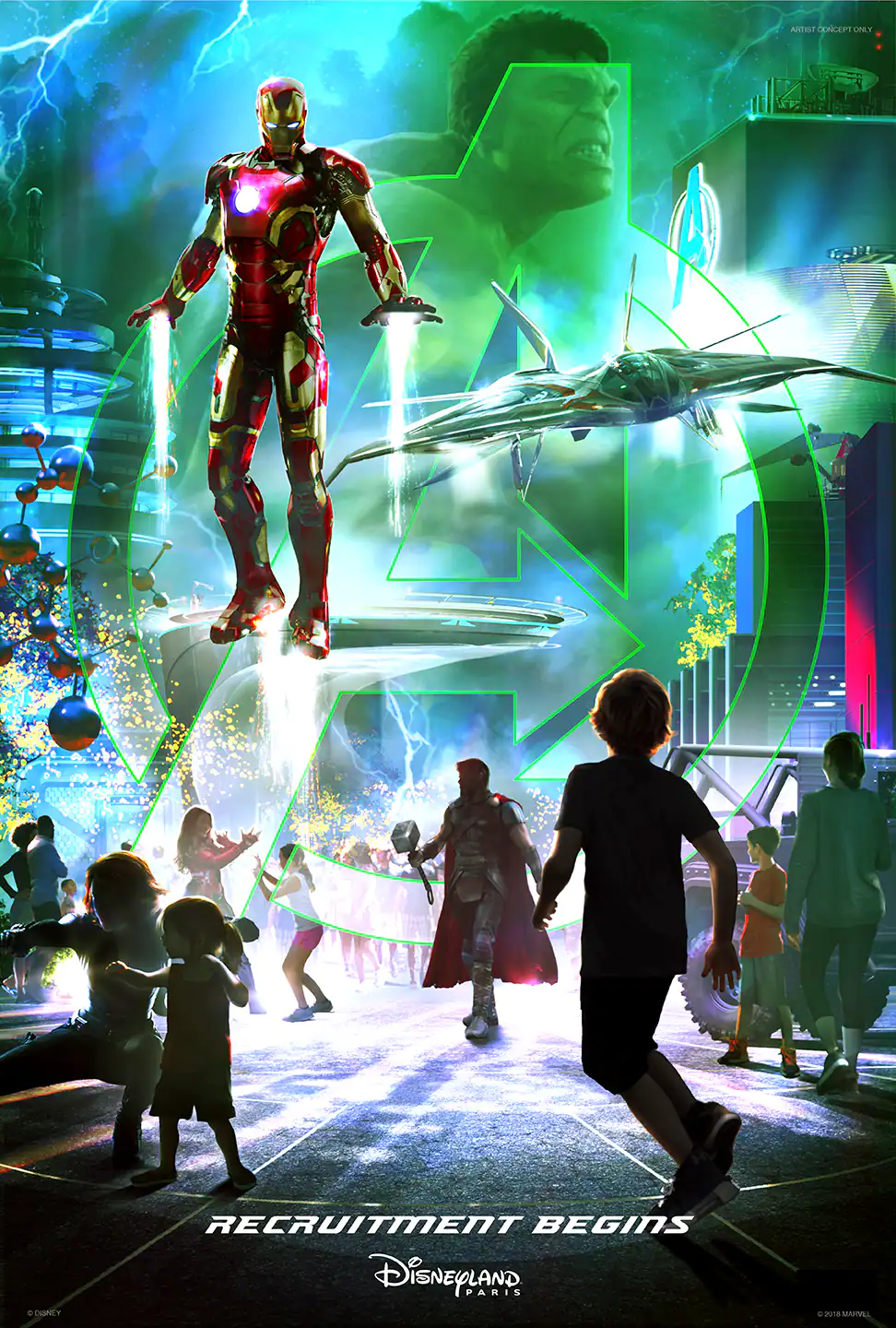
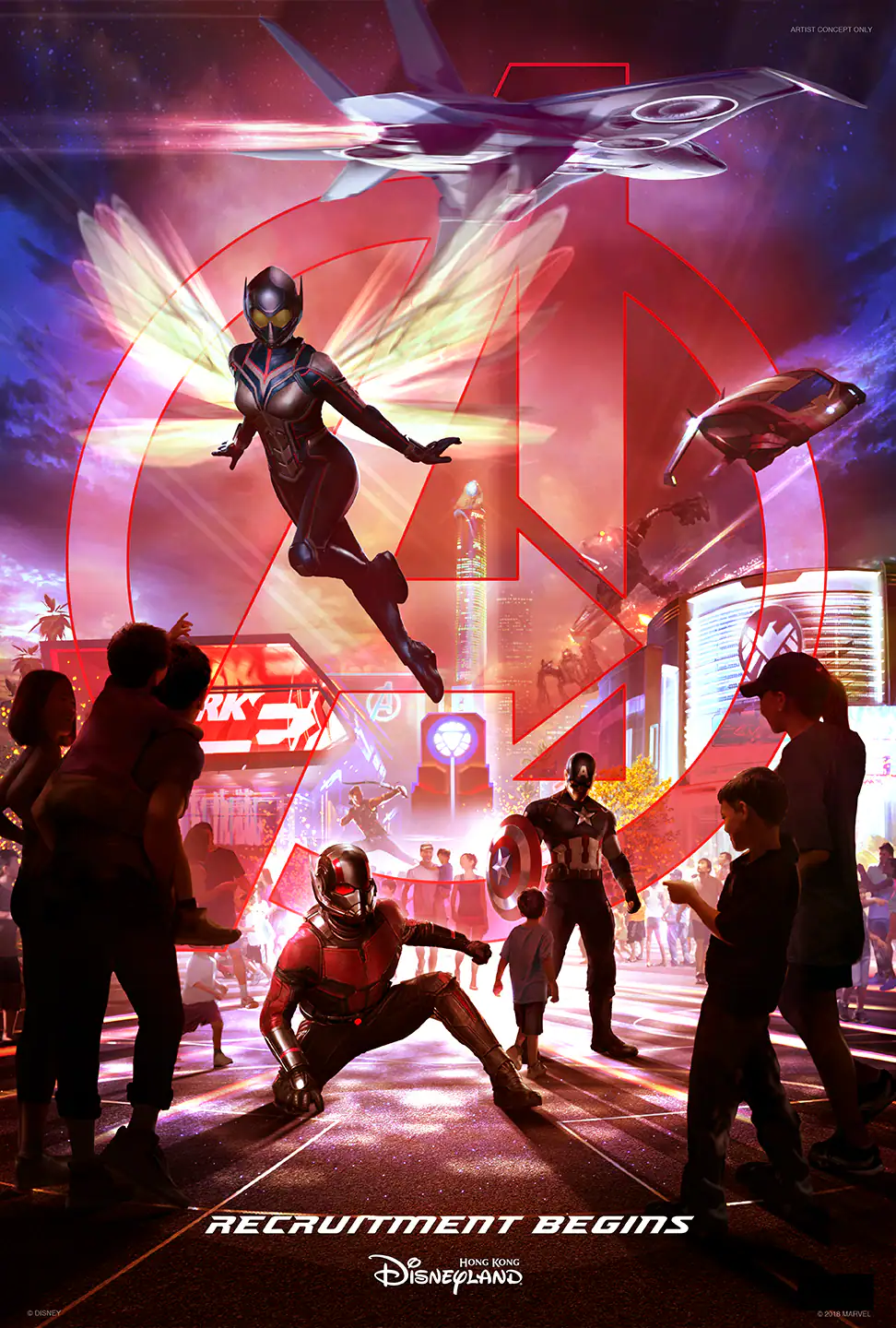

By March 2018, designers had regrouped. The Disney Parks Blog unveiled teaser posters for three formalized Marvel-themed lands that would evolve across the globe – at Walt Disney Studios Park in Paris, Hong Kong Disneyland, and Disney California Adventure. But where would it go in Disneyland’s second gate if not Hollywood Land?
On September 4, 2018 – after 16 years of being a gentle-yet-functional family space in the park – “a bug’s land” was squashed as “Stark Industries” walls overtook the land’s three entrances. Though almost certainly less grand than whatever “Plan A” had been, a Marvel-themed land would indeed rise in the six acre space…
2021 – Avengers Campus
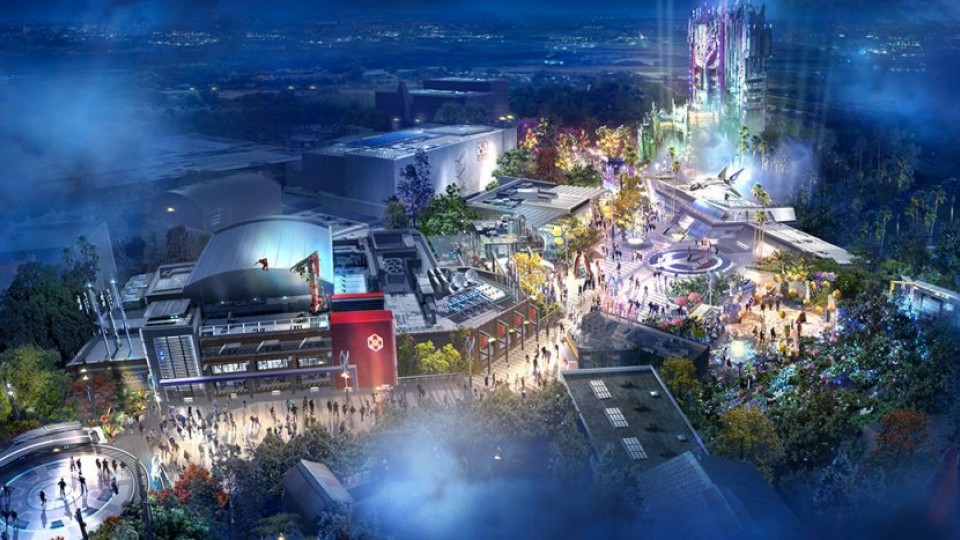
At Disney’s semi-annual D23 conference in 2019, the details were made official. While the new Avengers Campus land wouldn’t exactly match Galaxy’s Edge for scale, it would have a narrative “excuse” for existing within California Adventure.
How? The land’s setup describes it as a modern Southern Californian recruitment center established by the Avengers to train the next generation of heroes… us. (Walt Disney Studios Park’s Marvel land likewise took the form of an Avengers Campus narratively linked to the California edition, proving the adaptability of the “recruitment center” concept as a global formula for further iterations.)
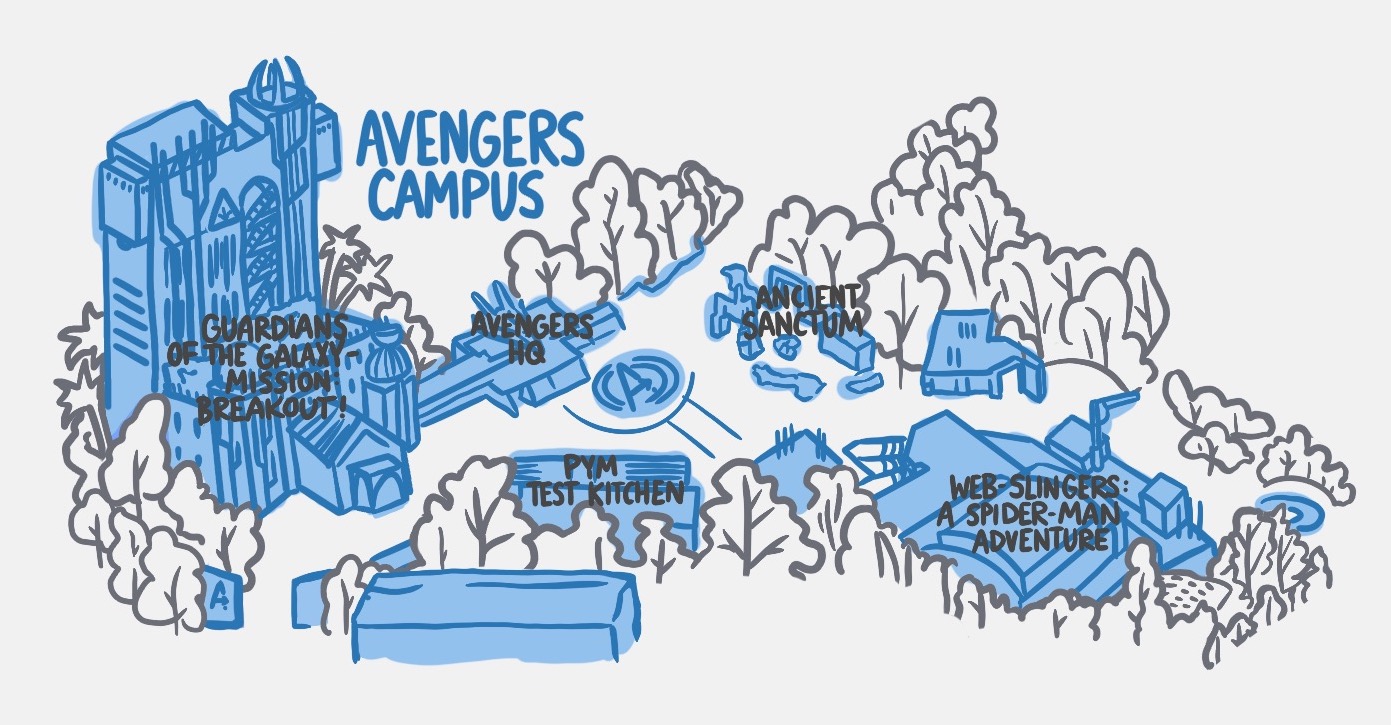
In some ways, perhaps the limitations of California Adventure’s real estate worked in Avengers Campus’ favor, creating a more adaptable, fluid space than a larger piece of real estate might’ve. (For all we know, given the full breadth of Hollywood Land’s property to work with, the park might’ve welcome a theme park version of New York, Wakanda, or Asgard – grander concepts to be sure, but also significantly worse fits for the park.)
Sure, fans will groan about the seeming creative cop-out of a land wherein “the time is now and the place is here,” but there’s a clever conceit buried in the ethos of Avengers Campus. Functioning as the “Tomorrowland” of California Adventure, you might imagine it as an IP-overlayed analogue of Silicon Valley, where the red-brick remains of a long-abandoned Stark Motors facility have been co-opted by grad students and repurposed as glass-walled tech labs and training facilities.
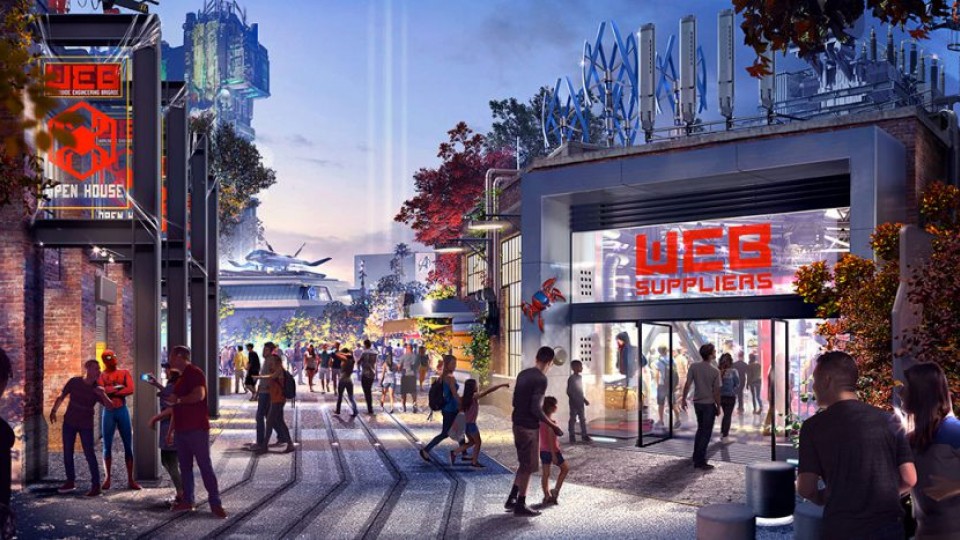
Intentionally set in a separate continuity from the Marvel Cinematic Universe and its life-and-death stakes, Avengers Campus is brighter and more vibrant, leaning at least a bit more into the comic book color and chaos that makes superheroes so fun. In this insulated corner of the Multiverse, even heroes who’ve exited or even died in the film franchise can still be seen in meet-and-greets and stunt shows. Narratively, they even have a reason for convening here beyond happenstance: they’re here to rally and train us.
The playful, embraced-Multiversal nature of Avengers Campus also makes it a relieving low-stakes counterpart to the self-serious Star Wars: Galaxy’s Edge. In Avengers Campus, Imagineers have built a sandbox in which they can play with Marvel heroes without convoluted canon or contrived coincidences to bring characters together.
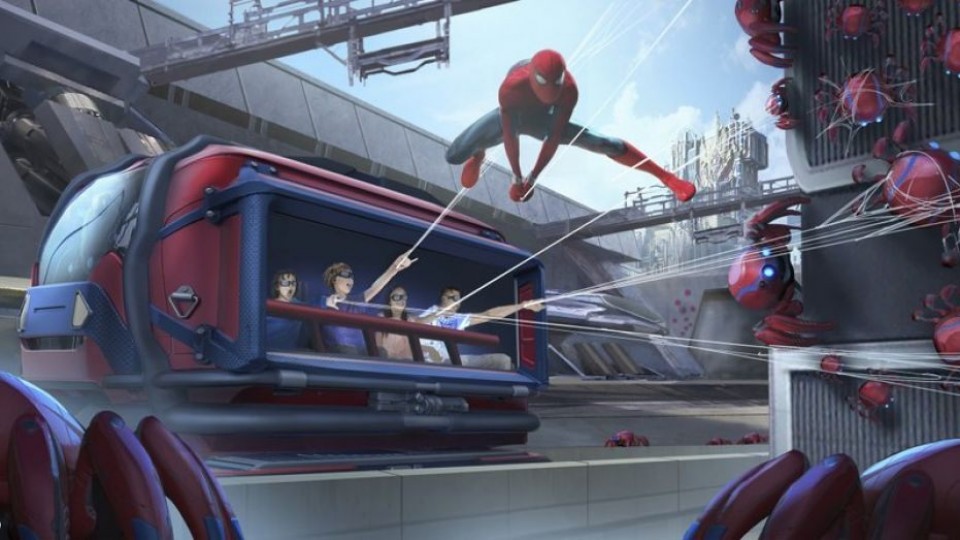
When the new land “began recruitment” on June 4, 2021, its sought-after new attraction was the family-focused interactive Web Slingers: A Spider-Man Adventure dark ride. On board, riders use hand gestures to launch digital webs and capture runaway Spider-Bots in a clear technological successor to Midway Mania. Refreshingly humorous and low-stakes, the no-height-requirement ride is certainly a plus for California Adventure… even if it’s fairly redundant with the original Midway Mania just a few minutes’ walk away, and despite not the amazing adventure most fans hoped for from Marvel’s web-slinging hero.
Aside from Guardians of the Galaxy – Mission: BREAKOUT!, the other new offerings from Avengers Campus (in true “Wizarding World-emulating” form) are a restaurant and microbrewery centered on Ant-Man, a cavalcade of character meet-and-greets, exceptional “streetmosphere” including spontaneous rooftop stunt shows, a hokey Dr. Strange magic show, the crowd-stopping debut of Disney’s “Stuntronics,” and of course, plenty of must-have souvenirs.
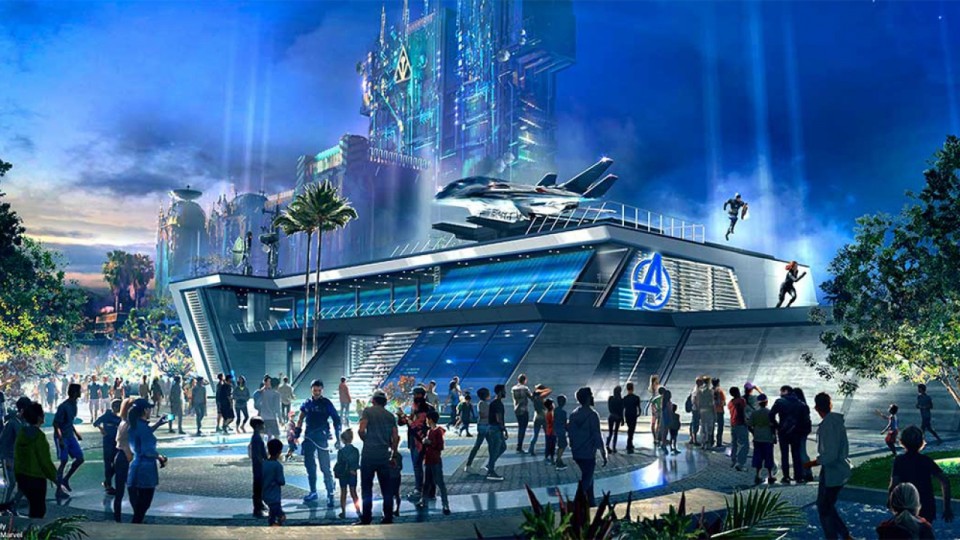
As to Imagineers’ insistence that the final Marvel Land would add context to the garish Guardians of the Galaxy, it… well… it doesn’t. Even in the context of the Campus – with its embedded history, red-brick-and-glass, blank-enough-slate-to-house-any-hero aesthetic – the earth-toned, pulsating, spacey tower is clearly an intrusion. (We recommended just a little placemaking that would at least allow the tower to feel embedded in the space…)
Speaking of elephants in the room, one other unignorable element of the land was the sprawling, streamlined “Avengers HQ” complete with the hero team’s iconic Quinjet parked atop (above). The glass-and-steel base camp of the Avengers basically served as an elaborate set piece upon which heroes and villains could orchestrate battles as onlookers gazed up from below.
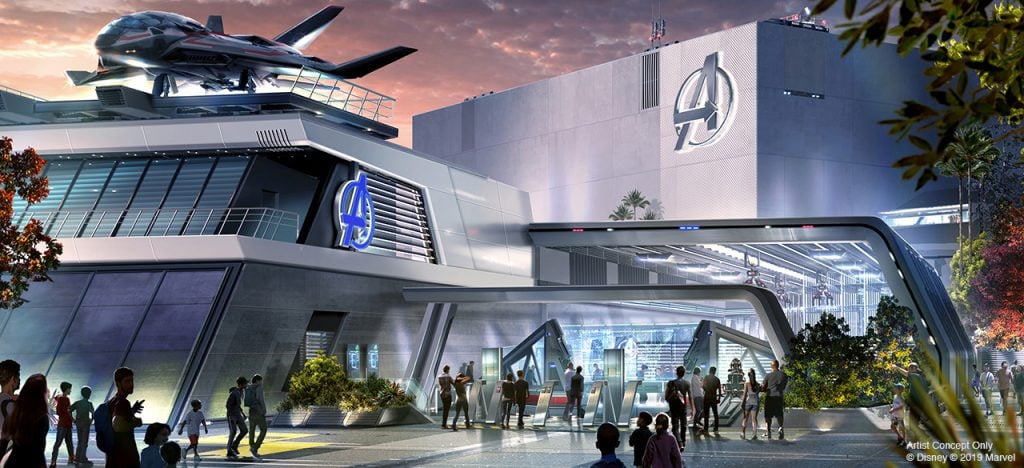
But quite clearly, the central Avengers base camp was an ornate entry portal to a ride that didn’t exist. Actually, during the announcement of Avengers Campus in 2019, Chapek had explicitly shown a “before” and “after” piece of concept art, the latter adding a massive white showbuilding emblazoned with the Avengers’ “A” logo looming beyond the glass headquarters. The ride that would eventually take place there – like the Avengers films – would serve as a mega crossover event and a blockbuster headliner for the land. But, Chapek said, it would arrive in a “Phase II” expansion in an unknowable future year.
What we know of this unnamed Avengers ride suggests that it would serve as a next-generation “U-Ticket” counterpart to Star Wars: Rise of the Resistance at Disneyland. Guests would apparently board the Avengers’ Quinjet (seen parked on the building’s roof) and set off to the African nation of Wakanda, joining the heroes in an all-out battle against a cosmic enemy.
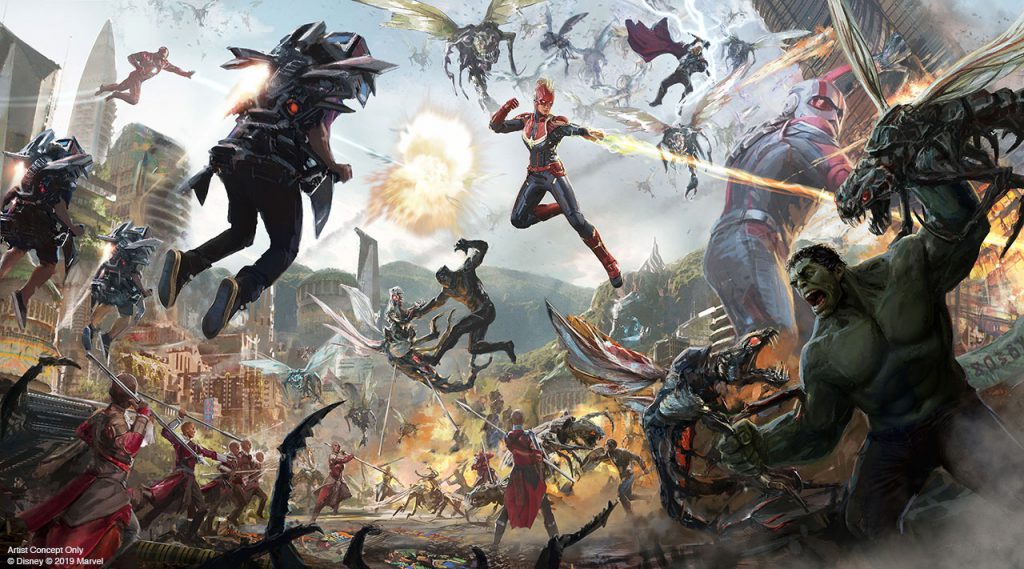
There, they’d allegedly eject from the Quinjet, revealing the ride’s jaw-dropping technological trick: each guest would actually be riding atop their own, individual vehicle, simulating a jet pack flight as they rendezvous with the Avengers.
Clearly, this ride – built on California Adventure’s last quantifiable expansion pad – would be worth the wait… even if no one was quite sure when it would arrive. (And given Disney’s timetables and the ride’s alleged sophistication, a groundbreaking in 2021 would’ve likely meant a 2025 opening at the earliest.)
Obviously, though, things didn’t work out as planned. On March 11, 2020, Disney announced that Avengers Campus would open in July. Of course, two days later, the entire world slammed to a halt as the COVID-19 pandemic began. Disneyland’s parks ended up being closed for more than a year. Even once they re-opened, work had been more or less paused on Avengers Campus, necessitating further extensions. Ultimately, the land opened June 4, 2021, by which time any hopes for that “U-Ticket” ride were pretty much dashed. (Don’t worry – this isn’t the end of the story.)
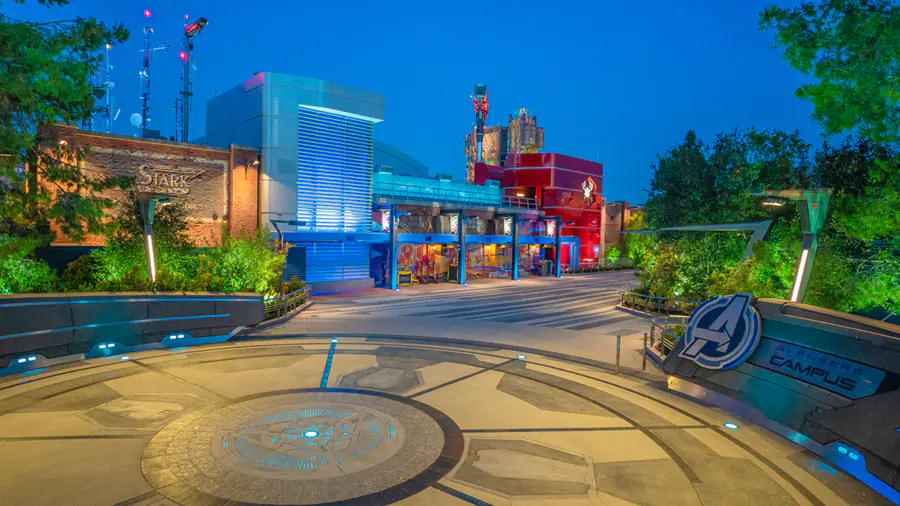
In any case, it’s clear that in Avengers Campus, Imagineers have made a valiant effort to make sense of the nonsensical, and turning an awkward, tiny plot of land into something that’s at least interesting. Surely, the mandate to include Marvel superheroes in California Adventure at all gave some of them pause, but contextualized as the park’s Tomorrowland, it’s not an impossible sell. After all, like Tomorrowland before it, Avengers Campus is a land whose message is of the possibilities of tomorrow; the brilliance of youth; the hopes and fears of progress; technology; cooperation; teamwork; resilience.
If you squint, you can probably agree that in some silly way, that does trace the story of Silicon Valley, and thus of California. But of course, if – like us – you’re still asking of the park’s additions “What does that have to do with California?” you’re in the 1% of ultra-nerds who would even bother to remember that once upon a time (and not too long ago) this was a park that boasted character-lite lands like Buena Vista Street, Grizzly Peak, Paradise Pier, and Pacific Wharf among its gems… Speaking of which…


